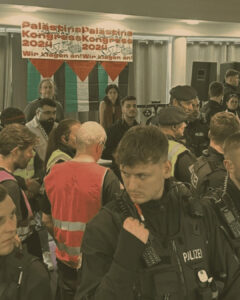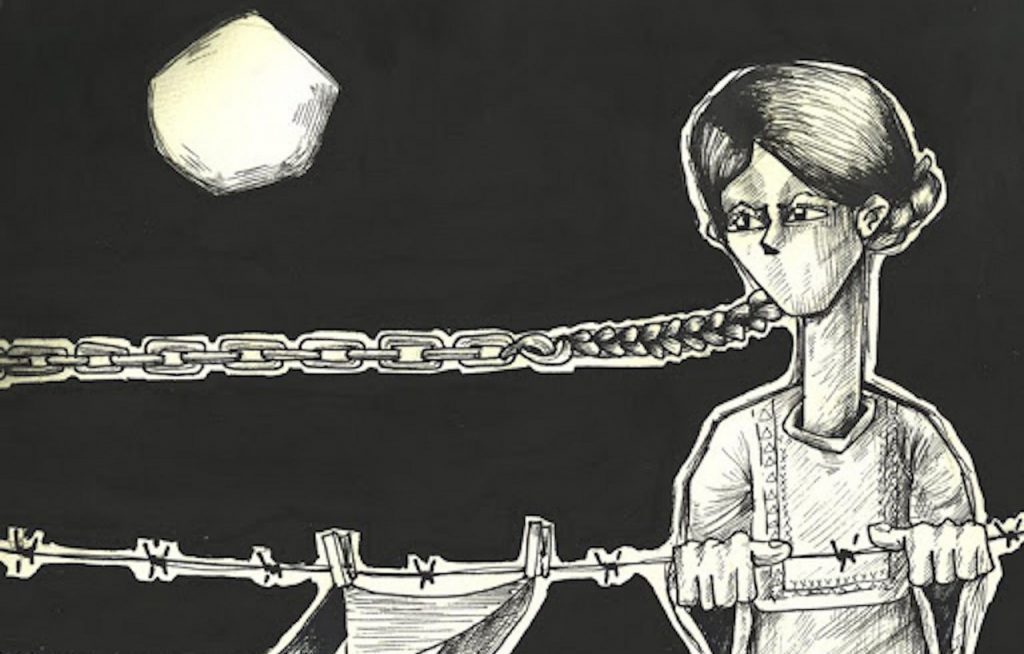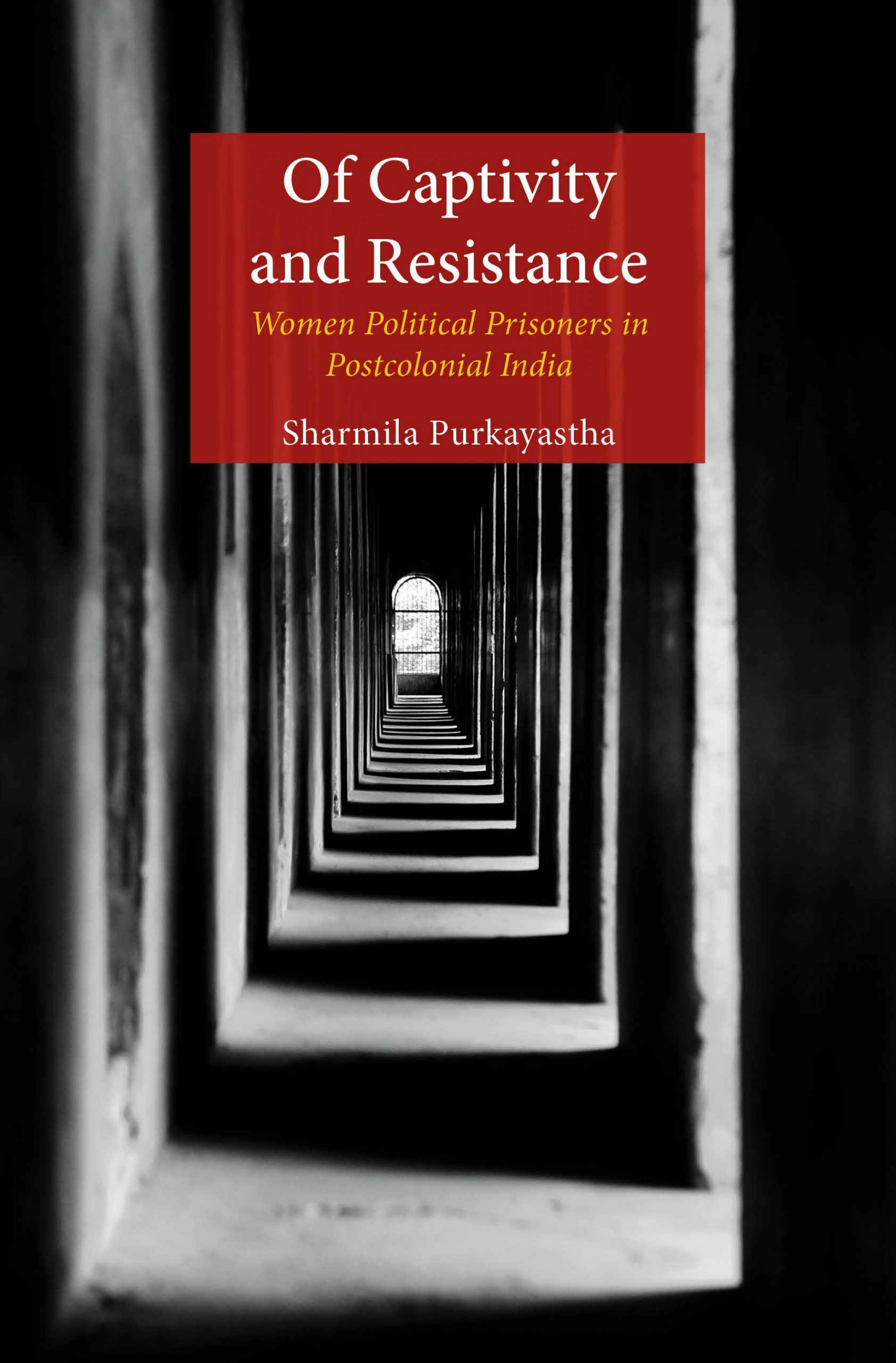


Prison narratives offer a rich account of female subculture within prison as they express the author’s curiosity about fellow prisoners, both comrades and common inmates. In the seventies, the Naxalite women actively explored the possibility of building sisterhood among comrades, and of creating an alternate family in captivity. Rita Banerjee’s account celebrates the commune that was consciously built in Presidency’s division ward, complete with a commune mother, and she offers a memorable account of the talents that many shared, ranging from cooking and gardening to singing, sewing, drawing and acting (R. Banerjee 2021: 67–70). The account makes clear that quotidian life in the commune was not restricted to sharing and caring but that it included cheering, consoling and joking too. More importantly, incarceration bestowed a political inflection to these common social and individual activities. Banerjee recalls an afternoon when her comrade, Anna, while eating off a common plate, enlightened her on why they were successful in sharing their food and other activities. According to Anna, it was because they actively shared a belief in politics and had a passion for a revolutionary future (68). In short, Anna built an organic relation between politics, food, work and the future! It was a fact that shared politics was powerful to integrate Anna’s working-class background with Banerjee’s middle-class, upper-caste and privileged upbringing. Besides uniting prisoners, commune life brought the families of the prisoners together as there was deep emphasis on sharing whatever any one person received from her family either during interviews or in court. Further, they believed in dialogue and in the power of self-criticism as a way of resolving friction and tensions (69). So, there was a conscious effort to put in practice the values associated with a revolutionary praxis, however limited.
Banerjee’s account of their commune prompts one to consider that the term ‘political’ cannot be narrowed to organizational politics and its activities, even while in the same period, men held active political classes in jail. In an interview, Ranabir Samaddar recalled classes being held in ‘shifts’, with batches of up to 30 in Medinipur Jail and the subjects taught varied from literacy to political classes (Samaddar 2018: 480)…. Contrarily, the female division ward of Presidency Jail was fairly homogenous, barring exceptions like Anna. Equally, while reading was a serious activity, there is no mention of political classes being held. However, from Rita Banerjee’s account it is obvious that she and several others were adherents of the Mahadev Mukherjee–led Central Committee, a CPI(ML) faction that upheld Charu Mazumdar’s authority after the latter’s death in 1972. In 1975, the news of Mukherjee’s arrest and his supposed betrayal before the police, as Banerjee says, left a pall of gloom in the division ward (R. Banerjee 2021: 70). The Bengal radicals, unlike their counterparts in Andhra where the movement was developing, experienced deep political disillusionment as the fragmentation of the CPI(ML) also led to the demise of the movement. The matter was more pronounced for those behind bars as they remained outside debates and discussions.
So, women’s political affiliation was important but not paramount as was the case in the male wards. But what is remarkable is that instead of submitting to the sense of political incapacity, the women’s commune showed a new form of optimism and confidence. The women’s insights into shared labour, recreation and care were transformative as they helped create a social politics which could counter their shared misery of being in a ‘jail within a jail’ and locked in from the outside world. The commune’s social politics was both circumstantial and radical as it was based on the exigencies of prison life along with a communitarian view of unalienated labour and recreation, which helped reinvent a popular Naxalite slogan that jail was the seat of political education. Hence, the commune activities complement the ‘hope’ literature that Shubhendu Dasgupta compiles in Jail khanaye lekha sottor (The seventies from prison) ([2000] 2017). Besides poems, slogans, songs, letters, etchings or poster writings which form the visual and oral nature of prison literature, Dasgupta draws attention to the improvised and collective nature of ‘forbidden’ activities, forbidden behind bars, such as the making of tea inside the cell or creating coffee out of roasted puffed rice! In writing, this optimism is evident in Meenakshi Sen’s repeated use of the collected ‘we’, instead of the personal ‘I’, suggesting a collective political impulse in writing.
More importantly, just as they redefined labour and pleasure behind locked doors, the Naxalites reinvented the collective meaning of carceral care. Rita Banerjee’s (2021: 61) account makes clear that for first-time prisoners who were brutally tortured in police custody, the division ward’s fragile care system built out of meagre jail rations provided relief, humanity and healing. It was a new beginning. Not for just newcomers but collective carceral caring was needed each time a comrade was beaten up by the bullies and bouncers of the matron (66). Apart from armed guards, prison violence was unleashed through prison gangs which were formed out of undertrial prisoners, and which worked under the direction of the matron, the authorized head warder and custodian of the female ward…. However, while brute order could be maintained in the female ward through these bouncers, the presence of a large number of Naxalites thwarted the gangs’ monopoly, especially since the Naxalites were ready to fight.
The Naxalite experience of prison violence arose out of their collective questioning of the systemic corruption, deprivation and denial which they saw first-hand. The sheer numbers—Banerjee notes that sometime in 1974 there were as many as 30 women in the ‘division’ ward besides a few who were kept in the cell ward—added to their collective power. They were young and energetic and could not be easily ‘disciplined’. Contrary to the jail propaganda of being ‘dangerous’ and ‘murderous’, most common prisoners befriended and looked up to them as women with agency. For instance, Banerjee mentions a time when over 30 prisoners, political and common, decided to observe hunger strike and boycotted lock-up—a term used to explain their refusal to be locked up. The protest was joined by those who returned from court too. The sheer numbers forced the jail staff and the gangs to retreat. The issues of the protest were basic: the prisoners demanded proper food share which was being pilfered and looted (R. Banerjee 2021: 68). They insisted that medicines should be available in the jail hospital and that the bouncers must apologise for their routine and random brutality. The Naxalites won…..
The Naxalite refusal to be cowed down demanded more systemic violence which could help challenge the legitimacy of the Naxalites. One way was to beat up individual Naxalites on one pretext or another, as was the case with Banerjee and her comrade when they were assaulted by the prison gang under the instruction of the matron.…. Another way of challenging the Naxalites was to humiliate them through a public beating of a common prisoner for daring to speak with them…. There was still another method which was more elaborate, as was in the case of an undertrial called Sufiya, who had demanded her rightful share of roja diet (29–49). Simply punishing Sufiya was not enough as she refused to back down on her demand and the matron and her bouncers beat her and sent her to the hated ‘degree’ cell. At this point, the matter got complicated because the Naxalites intervened along with the sympathetic welfare officer (alluded to in the previous section) who decided to take up the case of unjust punishment. While the intervention was successful and Sufiya was released from the ‘degree’ cell and sent back to the undertrial ward, neither the Naxalites nor the welfare officer could do anything when the matron got a doctor to certify that Sufiya was a lunatic and needed to be locked up in the lunatic asylum.
The process of fighting and losing was integral to the Naxalite collective experiences of jail violence, including their conundrum over intervening in systemic abuses. Paradoxically this rich experiential history brings out their engagement with common prisoners, the second facet of the female subculture. In Meenakshi Sen’s writing, this manifests itself in a mixed form, comprising the first-person testimony along with the third-person account of fellow inmates. The testimonial ‘I–we’, a collective narrative voice, is different from ethnographic presentation of life stories where the role of the ethnographer assumes significance as she/he has to undertake the arduous task of ‘breaching the many walls of popular bias’ and learning the ‘sensitivity’ required for converting life stories into data (Cherukuri 2007: 30–31). Unlike the testimonial proximity of prison writings, ethnographers have to gather ‘life stories’ over numerous interviews, and which are often characterized by what John Mckendy calls the ‘narrative debris’, the inevitable messy narrative disruptions that recur in the prisoner’s recollection of that act which caused the fact of incarceration…. Testimonies of political prisoners offer an advantageous oeuvre, a mutated and collective form of recollections, which simultaneously document the invisible crimes committed by jail officials and chronicle ordinary lives in extraordinary times of repression. As writerwitnesses, prison texts assume authenticity while removing the unease that class, culture, race or ethnicity creates between a metropolitan interlocutor and a subaltern inmate-narrator.





